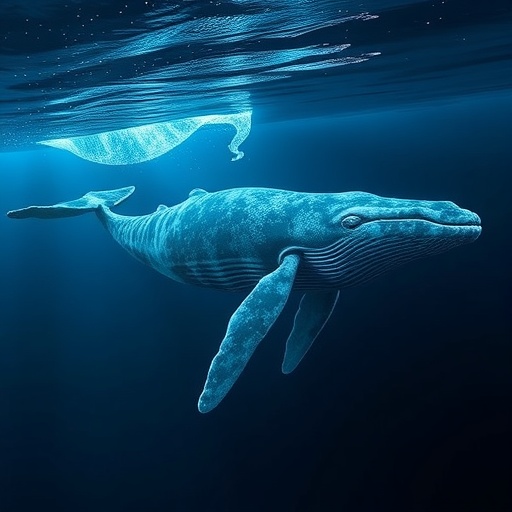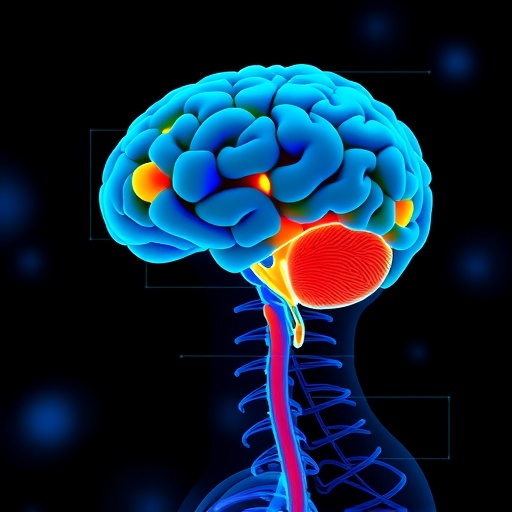Bowhead whales are extraordinary creatures, renowned not only for their immense size and resilience in the Arctic’s icy waters but also for their remarkable longevity. These majestic marine mammals stand apart as the only warm-blooded species known to surpass the typical human lifespan, often living beyond 200 years. Even more astonishing is their apparent immunity to many age-associated diseases, such as cancer, which devastate human populations worldwide. This enigmatic longevity has piqued the curiosity of scientists for decades. Recently, researchers at the University of Rochester unveiled a pivotal discovery that sheds light on the molecular mechanisms underpinning the bowhead whale’s impressive lifespan. Central to their findings is the DNA-repair protein CIRBP, which appears in astonishingly high concentrations in these whales, suggesting a novel pathway for enhanced genome maintenance.
Cancer initiation is a multifaceted biological process influenced by hereditary genes, environmental toxins, and cellular biology. A common thread among these factors involves damage to DNA. DNA integrity is critical for cellular function, and failure to repair DNA breaks effectively results in mutations that accumulate over time, often triggering oncogenesis. The research team found that the levels of CIRBP, a cold-inducible RNA-binding protein known to participate in cellular stress responses, are elevated roughly 100-fold in bowhead whale tissue compared to other mammals. This pronounced abundance indicates a robust system for detecting and rectifying genetic damage before it seeds malignancy, offering the whales resilience against DNA damage-induced diseases.
Vera Gorbunova, PhD, and Andrei Seluanov, PhD, from the Wilmot Cancer Institute at the University of Rochester, led this pioneering collaborative project with international partners. Publishing their results in the prestigious journal Nature, they provide compelling evidence that the bowhead whale’s longevity may hinge on these amplified DNA repair pathways. Their work involved rigorous experimental assays on animal tissue samples, including quantifying CIRBP expression levels and assessing DNA repair efficacy under different physiological conditions. The implications extend beyond marine biology and touch on human health potential, inspiring a new avenue of biomedical research into aging and cancer prevention.
The biological superpowers of longevity and cancer resistance are not unique to bowhead whales. Gorbunova and Seluanov’s team has also explored other long-lived species, such as bats, revealing similar evolutionary adaptations that confer protection against malignancies. Their ongoing investigations aim to discern conserved molecular pathways across species with extended lifespans and decode nature’s strategies for genome stability and disease resistance. By understanding these mechanisms, researchers hope to develop translational therapies that could mimic these protective effects in humans, potentially extending healthy human lifespan and reducing cancer incidence.
Interestingly, the research conducted in Alaska included a serendipitous finding related to CIRBP activation. The protein’s abundance and activity appear to be modulated by environmental temperature, with lower temperatures significantly enhancing CIRBP expression. This aligns with CIRBP’s designation as a cold-inducible protein and suggests a direct link between environmental cues and molecular defense mechanisms. The researchers postulate that the cold Arctic habitat of the bowhead whale may provide a natural stimulus that amplifies its genetic repair systems, reinforcing its longevity and health span.
Given these insights, a question naturally arises regarding the translation of these findings to human biology. While the research is at an early stage, Gorbunova speculates that boosting CIRBP activity in humans could offer a promising strategy to enhance DNA repair and combat the accumulation of age-related genetic damage. Experimental avenues might include lifestyle modifications, such as controlled exposure to cold conditions—exemplified by practices like cold showers—that could potentially simulate the protein’s activation pathways observed in whales. If feasible, these interventions might one day complement traditional approaches to aging and cancer prevention.
The discovery of CIRBP’s central role in genome maintenance provides a fresh perspective on aging biology. Traditionally, aging has been considered an inevitable decline driven largely by the wear and tear of cells and organs. However, this study suggests an evolved biological defense, operating at the molecular level, that can sustain cellular integrity for centuries. The bowhead whale’s biology exemplifies a biological blueprint potentially adaptable to other mammals, including humans, representing a paradigm shift in gerontology and cancer research.
On a molecular scale, CIRBP plays multiple roles. This protein binds RNA, stabilizing transcripts necessary for cell survival and stress adaptation, especially under DNA damage conditions. In bowhead whales, its elevated expression likely synchronizes the activation of complex DNA repair pathways, including nucleotide excision repair and homologous recombination. These pathways meticulously excise and replace damaged DNA segments, preventing mutations that could develop into cancer. The study’s experimental data underscore not only the significance of expression levels but also the functional enhancement of repair processes affiliated with CIRBP.
Furthermore, the research underscores the evolutionary dimension of longevity. Bowhead whales evolved in extreme environments characterized by cold temperatures and limited food resources, imposing selective pressures favoring organisms with superior maintenance mechanisms for cellular and genetic damage. The dramatic upregulation of CIRBP can thus be viewed as an adaptive response, integrating environmental stimuli with molecular biology to extend lifespan while mitigating pathological risks.
Though the direct application to human therapeutics remains speculative, these findings galvanize research into pharmacological agents or gene therapies aimed at modulating CIRBP expression or mimicking its function. Such interventions could one day revolutionize how we approach age-related diseases and cancer prevention. Critically, the study introduces the concept that tailored environmental exposures might complement biotechnology in maintaining genome integrity, emphasizing a holistic understanding of biology and environment interaction.
Finally, the work by Gorbunova and Seluanov, situated within Wilmot Cancer Institute’s Genetics, Epigenetics, and Metabolism research program, reflects a broader scientific commitment to deciphering the biological foundations of aging. Their journey from bowhead whales to potential human applications illustrates the timeless synergy of comparative biology and modern molecular science. As the quest to unravel longevity’s secrets continues, these findings mark a crucial step forward, illuminating pathways that not only extend life but enhance the quality of that life.
Subject of Research: Animal tissue samples
Article Title: Evidence for improved DNA repair in long-lived bowhead whale
News Publication Date: 29-Oct-2025
Web References: http://dx.doi.org/10.1038/s41586-025-09694-5
References: Gorbunova V., Seluanov A., et al. (2025). Evidence for improved DNA repair in long-lived bowhead whale. Nature. DOI: 10.1038/s41586-025-09694-5
Keywords: Bowhead whale, longevity, DNA repair, CIRBP protein, cancer resistance, genome maintenance, aging, molecular biology, cold-inducible RNA-binding protein, comparative biology, lifespan extension
Tags: Arctic marine biologybowhead whale longevitycancer resistance in marine mammalscellular stress responses in whalesCIRBP protein and agingcold-inducible RNA-binding proteinsDNA repair mechanisms in whalesenvironmental factors affecting DNA integritygenomic maintenance in long-lived speciesimplications for human aging researchmolecular biology of whale lifespanunique adaptations of bowhead whales





